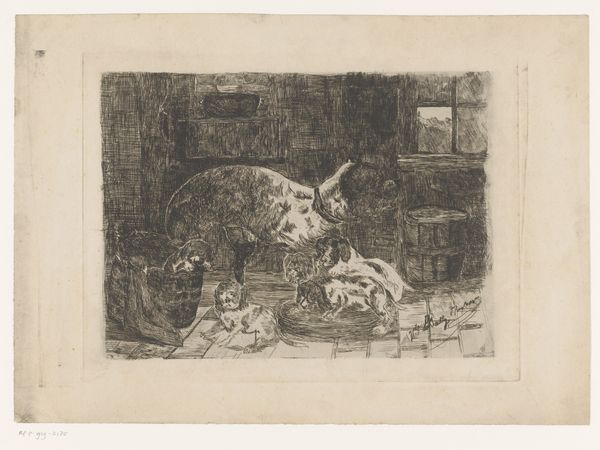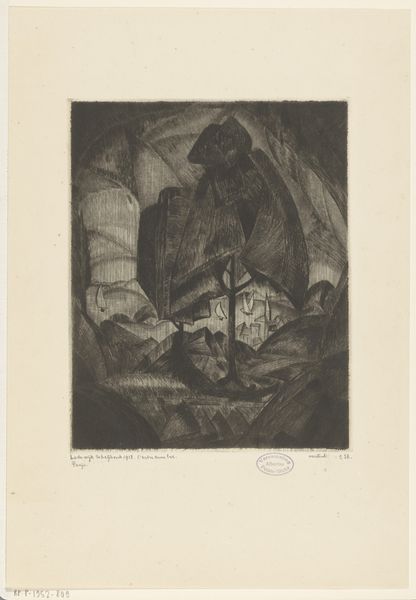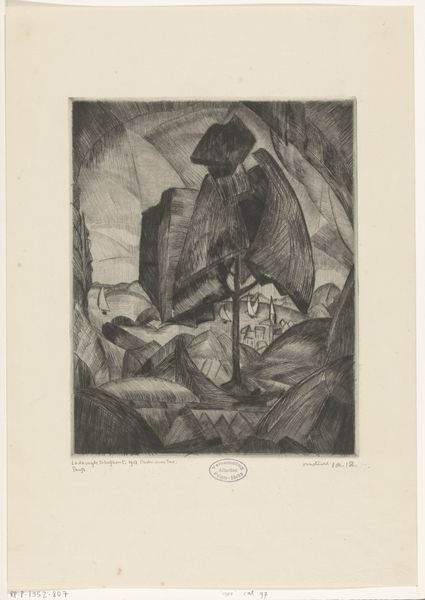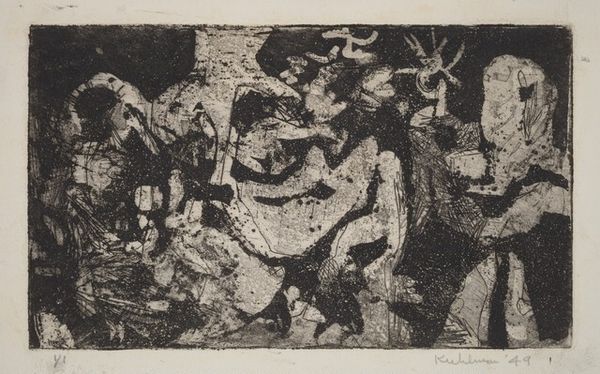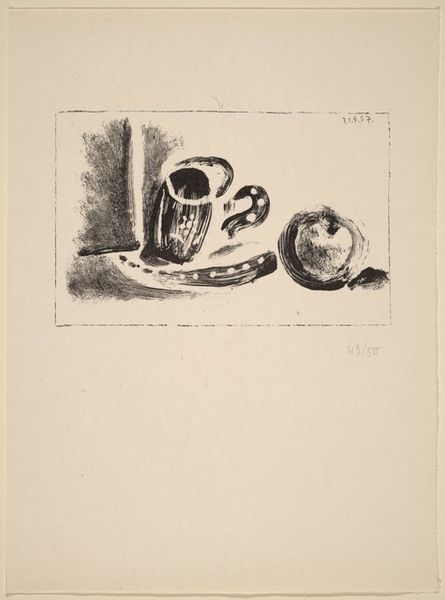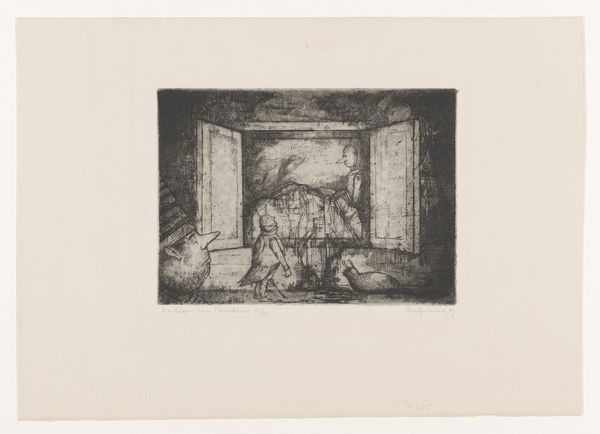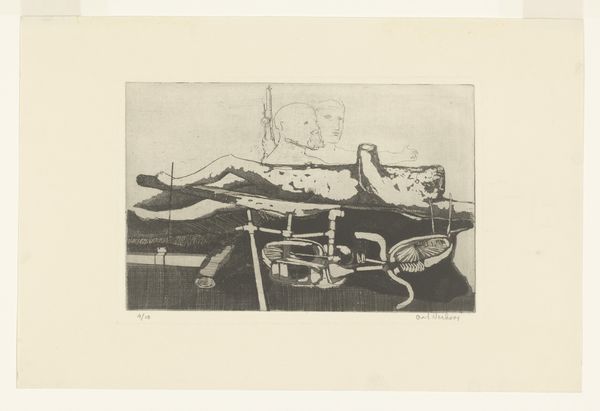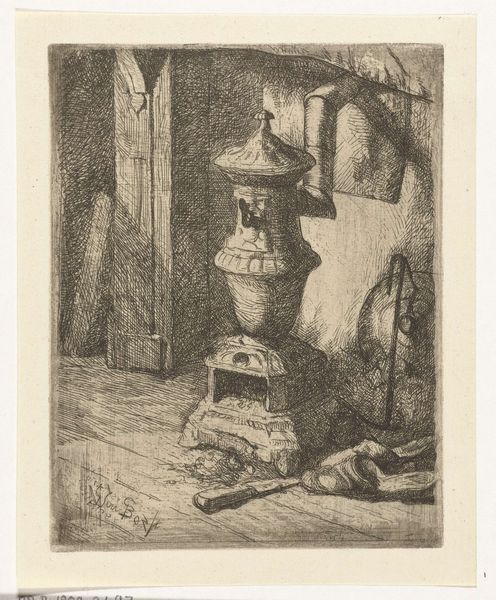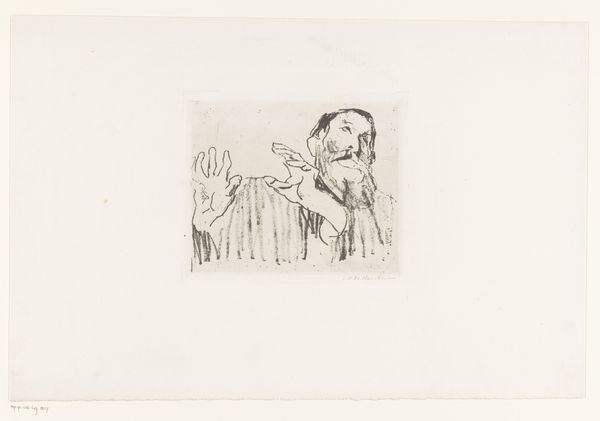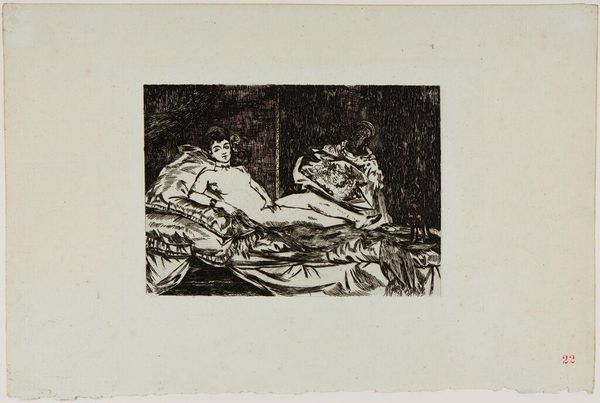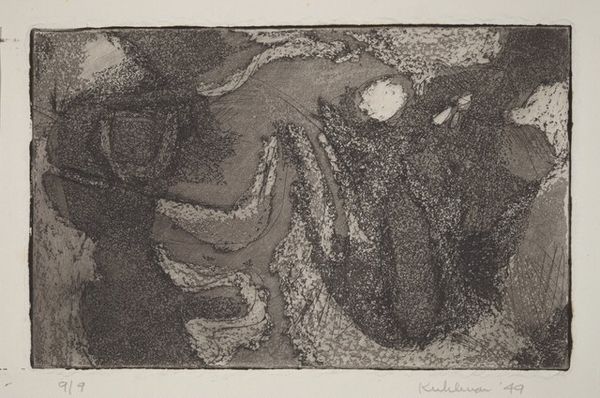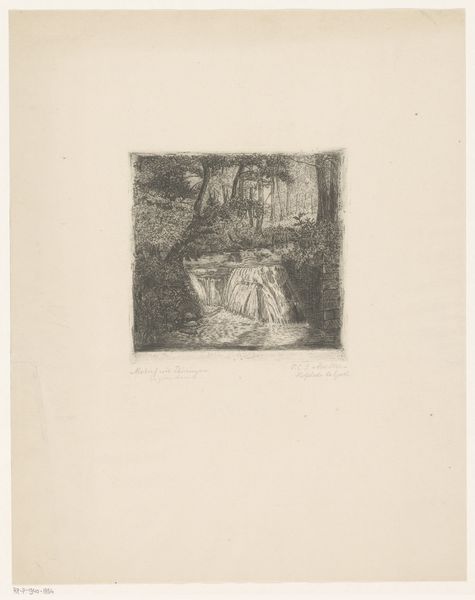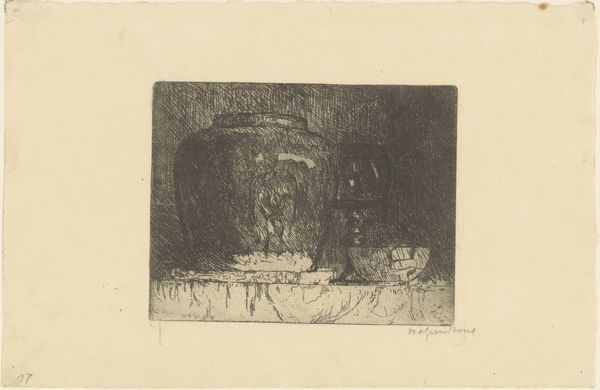
print, etching, sculpture
# print
#
etching
#
figuration
#
sculpture
#
abstraction
#
modernism
Dimensions: plate: 14.9 x 22.9 cm (5 7/8 x 9 in.) sheet: 21.9 x 29.5 cm (8 5/8 x 11 5/8 in.)
Copyright: National Gallery of Art: CC0 1.0
Editor: We are looking at "In the Magic Garden", an etching done by Louise Nevelson between 1953 and 1955. It's a fairly abstract piece, but I see some figures. I'm interested in the tonal range in this work. What can you tell me about how its structure relates to modernism? Curator: The piece invites examination through the language of form itself. Note how Nevelson orchestrates a complex interplay between positive and negative space, effectively fracturing the picture plane. The arrangement isn't about direct representation; instead, we see forms existing for their own sake. How would you describe Nevelson’s approach to the materials? Editor: Well, the dark etching seems to flatten everything, giving it an almost sculptural feel, even though it's a print. Are these the visual echoes of her larger sculptural installations? Curator: Precisely. The abstract forms, though rendered two-dimensionally, possess a distinct materiality. This treatment nods towards a rejection of traditional pictorial illusionism. Instead of striving for realistic depth, Nevelson asserts the physical presence of the artwork. Also, this emphasizes the aesthetic experience itself. Do you see certain qualities in the linework that suggest volume? Editor: Now that you mention it, yes, in some sections I see varying pressure suggesting volume through changes to line thickness and darkness. So, is the work referencing reality in some way or is the formalism strictly about form itself? Curator: It resists easy interpretation precisely because its meaning emerges from this dynamic between the abstract and the suggestive, rather than aiming for literal depiction. It pushes boundaries on conventional understanding. Editor: This new perspective definitely transforms how I see the artwork, prompting me to delve deeper into its construction. Curator: Yes, now our experience pivots from representation towards engagement with formal qualities and its own unique reality.
Comments
No comments
Be the first to comment and join the conversation on the ultimate creative platform.

